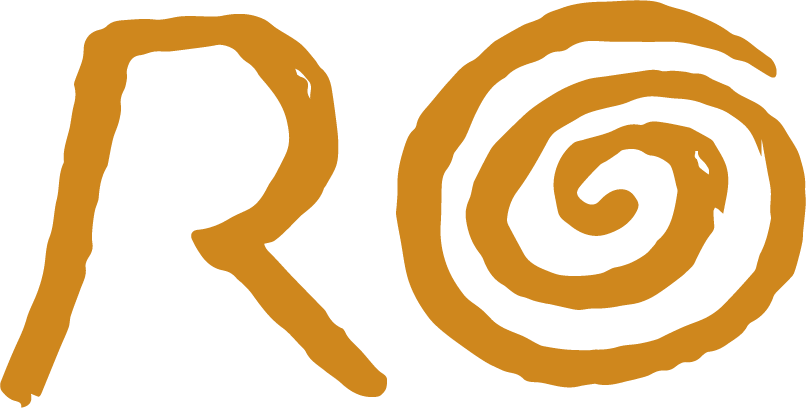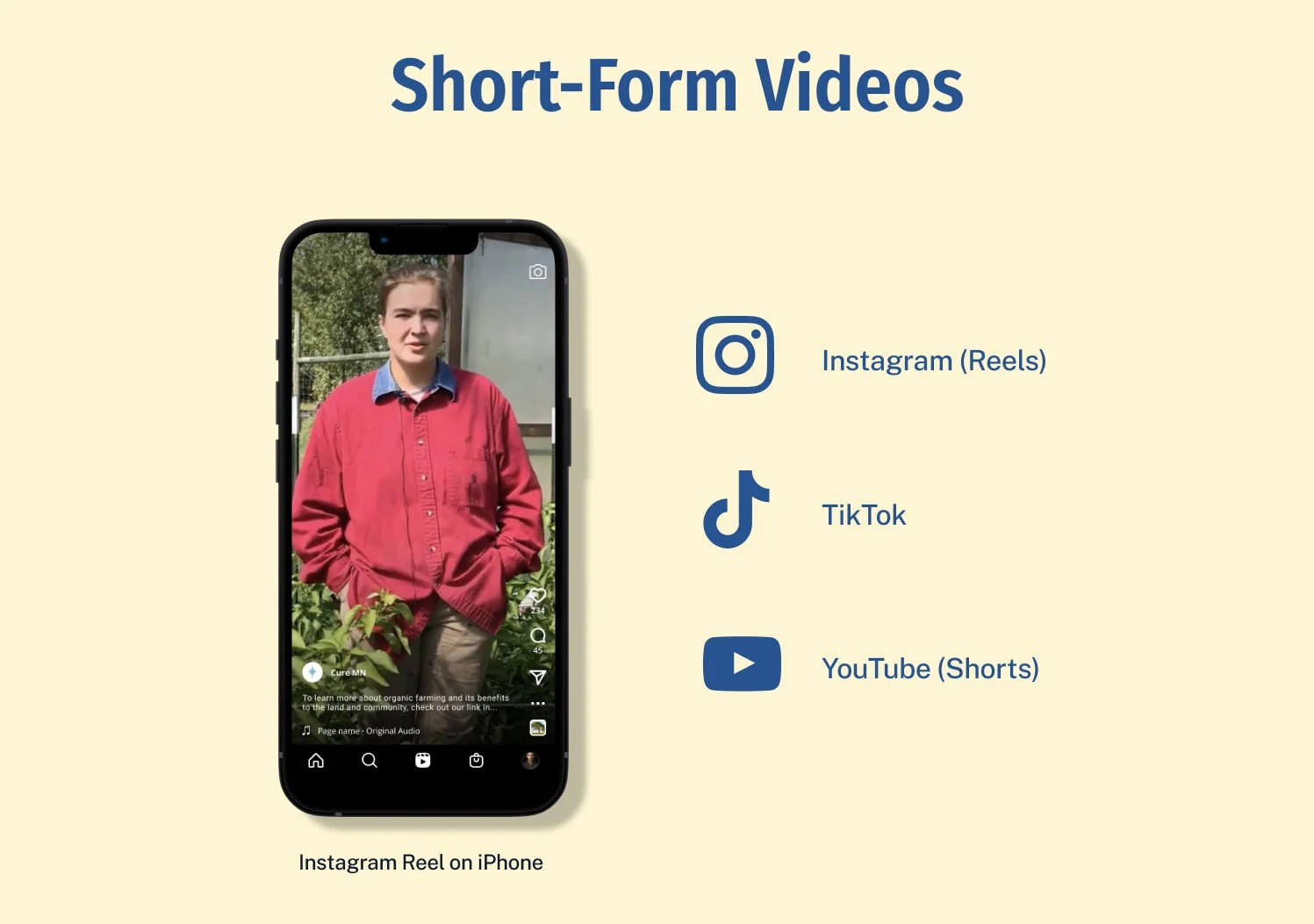CURE
Strategy
Creating a strategy for a Minnesota-based, grassroots environmental nonprofit to reach more users
My role: strategy for social media touchpoint
Collaboration: research/creation of client deliverables
Tools:
Figma
Adobe Illustrator
Quicktime
Methods:
Know/don’t know/assume
Stakeholder interview
Secondary research
Kanban board
Deliverables:
The Client
CURE is a Minnesota-based non-profit whose mission is to empower rural Minnesotans to engage in the active improvement of their communities and future through environmental awareness, education, and activism.
Mission Statement: CURE protects and restores resilient communities and landscapes by harnessing the power of people who care about them.
The Problem
CURE wants to engage more people, convey what they do more clearly, and reach a younger audience through improving strategy for key touchpoints.
The Solution
My team created a strategy for CURE’s key touchpoints (website, email, ads, and social media), as well as high-fidelity wireframes focused on improving areas of priority. While much of the work was done as a group, each team member was responsible for prototyping and strategizing one touchpoint. My focus was social media.
What Surprised Me
Creating a strategy for a non-profit organization is different from creating a strategy for a for-profit organization. However, it’s not as different as I had expected, because the users still act on their own needs even if the product is selfless, and the organization still has goals that they want to accomplish all the same.
The Users
CURE wants to connect with more users of a younger age, like Gen Z and Millennials, who care about the future of their community. Much of the engagement they are currently seeing is coming from longtime-involved older folks, and while CURE appreciates the dedication, they also want to connect to some younger generations as well.
The Process
Research
Know/Don’t Know/Assume - You know what happens when we assume… So we got our assumptions out on paper, as well as what we already knew and didn’t know, in order to prepare questions for the stakeholder interview.
The stakeholder interview gave way to multiple pages of notes, but there was still more research to be done. We took to the good-ol internet and did a secondary research deep-dive to find more data to further inform our strategy recommendations. Data was shared in the team’s Figjam file, which we referred to for our touchpoint strategy map and creation of our guiding strategy statement. These tools would serve as references for us while creating our strategy.
We created the touchpoint strategy map as a team, and Amber made it high fidelity.
View/download a PDF of the full touchpoint strategy map.
Strategy Statement:
All user experience touch points (email, ads, social media, and website) for CURE will help rural communities to feel connected and empowered so that they are able to improve their community and ecosystem's health.
We will do this by focusing on improving the hierarchy of the website and providing recommendations on social media, ads, and emails.
As a team, we came up with a prototyping plan that prioritized areas of focus within touchpoints, and then delegated prototyping responsibilities to different members of the team (I was responsible for the social media touchpoint).
Social Media Protyping & Strategy
Secondary research data helped direct my approach to the social media strategy. It showed that video – specifically, short-form video (that would be found on TikTok, Instagram Reels, or YouTube Shorts), would probably be the best way to reach Gen Z and Millennials.
Early ideation - storyboards (shown below) were created to show my ideas for videos that CURE could easily create and that would be received well by younger generations.
“Raise Awareness/Take Action” video concept
“Take Action” video concept
Challenges while searching for inspiration - I wanted to find some existing examples on TikTok that could show the CURE team what they should strive for, and what similar nonprofits are doing. I started by looking at prominent organizations like Sierra Club, but was surprised to find that they were getting poor engagement for their size (less than 50 likes on most videos). That’s an organization that spent over $150 million in 2022, and in my opinion, their videos were not engaging. I still gave CURE some videos to reference, but none of these examples had the same kind of subject matter as CURE.
Final Solutions
High-Fidelity Design:
Using a screenshot of an existing (long-form) CURE video, I created a mockup to demonstrate what a CURE short-form video might look like. Since the strategy for social media ended up being more content-based with less focus on visuals, prototypes created for this touchpoint were more minimal.
I also gave CURE some tips and content ideas for creating short-form videos to optimize engagement from a younger crowd.
Tips:
Try to post once per week
Try adding a trending song/sound
Use hashtags
Try to keep short-form videos between 7 and 60 seconds
Evoke empathy by using a persuasive yet authentic monologue
Use auto closed-captions
Pay attention to which of your posts get the most views
Content ideas:
Take action on an issue
Education (solution or awareness)
Anything fun or interesting that CURE is up to/has done
Anything that aligns with CURE’s mission and might intrigue viewers
Meanwhile, the rest of my team was hard at work creating prototypes and strategies for other key touchpoints. We brought everything together into a slide deck report.
View/download the full report PDF.
Finally, my team created a video presentation for CURE, going over our entire strategy plan’s recommendations, relevant research, touchpoint prototypes, and project information.
How I grew
I learned that designing a strategy for a client is kind of like the old saying, “give a man a fish, he’ll eat for a day; teach a man to fish, and he’ll eat for a lifetime”. We didn’t actually teach the client to fish, but we did give them a metaphorical fishing rod, line, lure, hook, and clear instructions. What they do with all of that is up to them, but if they actively engage with our advice, they could be eating for many years to come.
Going forward, I would recommend the client continues to conduct research on how they can best reach their target audience, as this may change over time, especially with social media.


